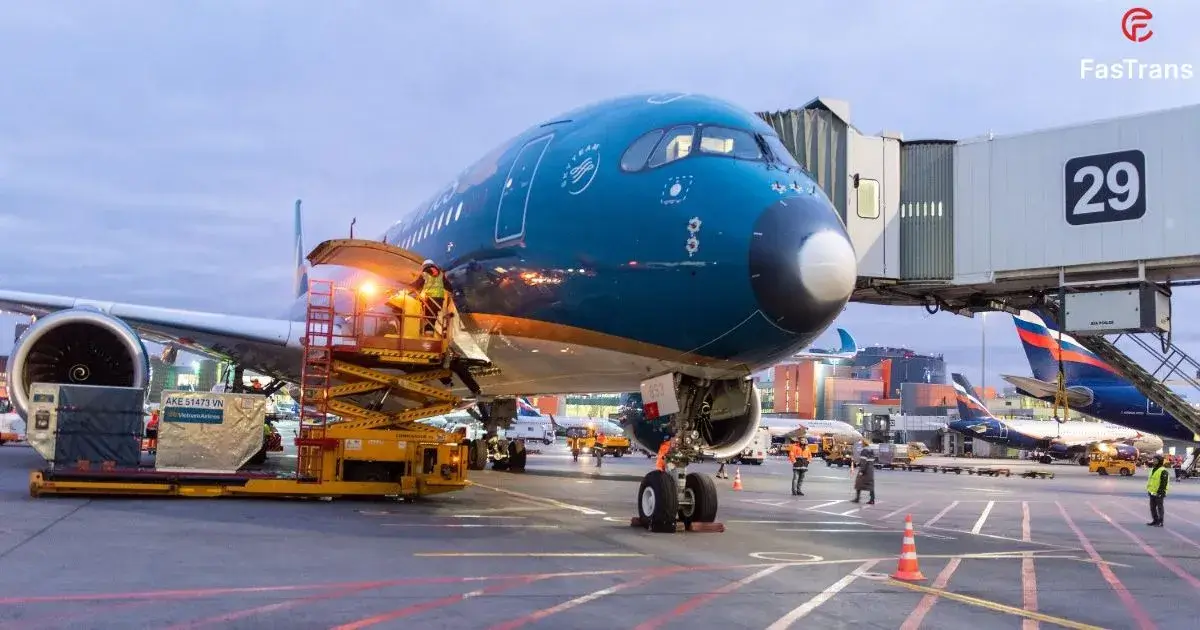Navigating Vietnam’s airports and logistics growth
As one of Asia’s fastest-growing economies, Vietnam is quickly becoming a central player in the global logistics and air cargo industry. With strong demand from manufacturing, exports, and e-commerce, the country is investing heavily in infrastructure, digital systems, and skilled labor to support a new era of growth. In this blog, we explore Vietnam’s air cargo landscape, the role of major airports, and what lies ahead for logistics in this dynamic Southeast Asian country.
Vietnam’s air logistics market is expanding
Vietnam’s air cargo sector is growing at an impressive rate. Forecasts suggest the country could handle over 1.5 million tonnes of air freight by 2025. This rapid rise is driven by:
– A booming export economy, especially electronics and garments
– Expanding cross-border e-commerce
– Rising consumer demand in Asia and beyond
But along with opportunity, Vietnam still faces some challenges:
– Outdated cargo infrastructure at many airports
– A shortage of trained logistics professionals
– The need for modern technology such as digital tracking and e-AWB (electronic air waybills)
Despite these obstacles, the government and private sector are actively investing in solutions

Four key airports driving logistics
Vietnam’s international airports play a vital role in air cargo operations. Each has unique strengths based on location, cargo volume, and infrastructure.
| Airport (with IATA code) | 2023 Cargo Volume | Key Strengths |
| Noi Bai (HAN) | ~667,000 tonnes | Northern exports, electronics, US routes |
| Tan Son Nhat (SGN) | ~516,000 tonnes | Southern hub, 3 terminals, global access |
| Da Nang (DAD) | Growing rapidly | Central Vietnam, rising demand |
| Cat Bi (HPH) | ~17,000 tonnes | Near Hai Phong Port, future potential |
Noi Bai International Airport (Hanoi)
Located in the north, Noi Bai is a major cargo gateway, especially for exports to China, Japan, and Europe. It handled around 667,000 tonnes of cargo each year.
Tan Son Nhat International Airport (Ho Chi Minh City)
As Vietnam’s busiest airport, Tan Son Nhat processes over 516,000 tonnes of cargo annually. With three terminals operated by TCS and SCSC, it serves as the southern hub for international air freight. Its central location near industrial parks and ports makes it a top choice for global carriers.
Da Nang International Airport
Strategically located in central Vietnam, Da Nang airport is growing rapidly. During the 2025 national holidays, cargo throughput increased by over 200%. It serves both tourism and trade, supporting manufacturers in central Vietnam.
Cat Bi International Airport (Hai Phong)
Cat Bi supports northern Vietnam’s seaport city of Hai Phong. While smaller in volume (~17,000 tonnes annually), its proximity to industrial zones and Hai Phong Port positions it well for future multimodal logistics expansion.
Industry trends and future outlook
Vietnam is actively modernizing its logistics landscape. Key developments include:
1. Infrastructure expansion: Long Thanh International Airport, under construction near Ho Chi Minh City, will be a game-changer. It is expected to handle 1.2 million tonnes of cargo in its first phase and up to 5 million tonnes by 2035.
2. Technology and digitalization: Companies are adopting digital tools for cargo tracking, inventory, and customs processes. This includes:
– Real-time tracking systems
– e-AWB implementation
– AI dashboards for warehouse management
3. Workforce development: Vietnam faces a shortage of skilled logistics workers. Investment in training programs and partnerships with universities is essential to build the next generation of logistics professionals.
4. Sustainability focus: Eco-friendly logistics is becoming a priority. From greener warehouses to low-emission cargo vehicles, Vietnam is joining the global movement toward cleaner supply chains.
Vietnam’s logistics and air cargo sector is evolving fast. With strategic investments in airports, digital systems, and human capital, the country is poised to become a regional logistics powerhouse. For businesses in Asia and beyond, Vietnam offers a compelling mix of cost-efficiency, connectivity, and capacity for future growth. Whether you are a freight forwarder, importer, or e-commerce brand, understanding Vietnam’s air cargo ecosystem is essential for long-term success.



